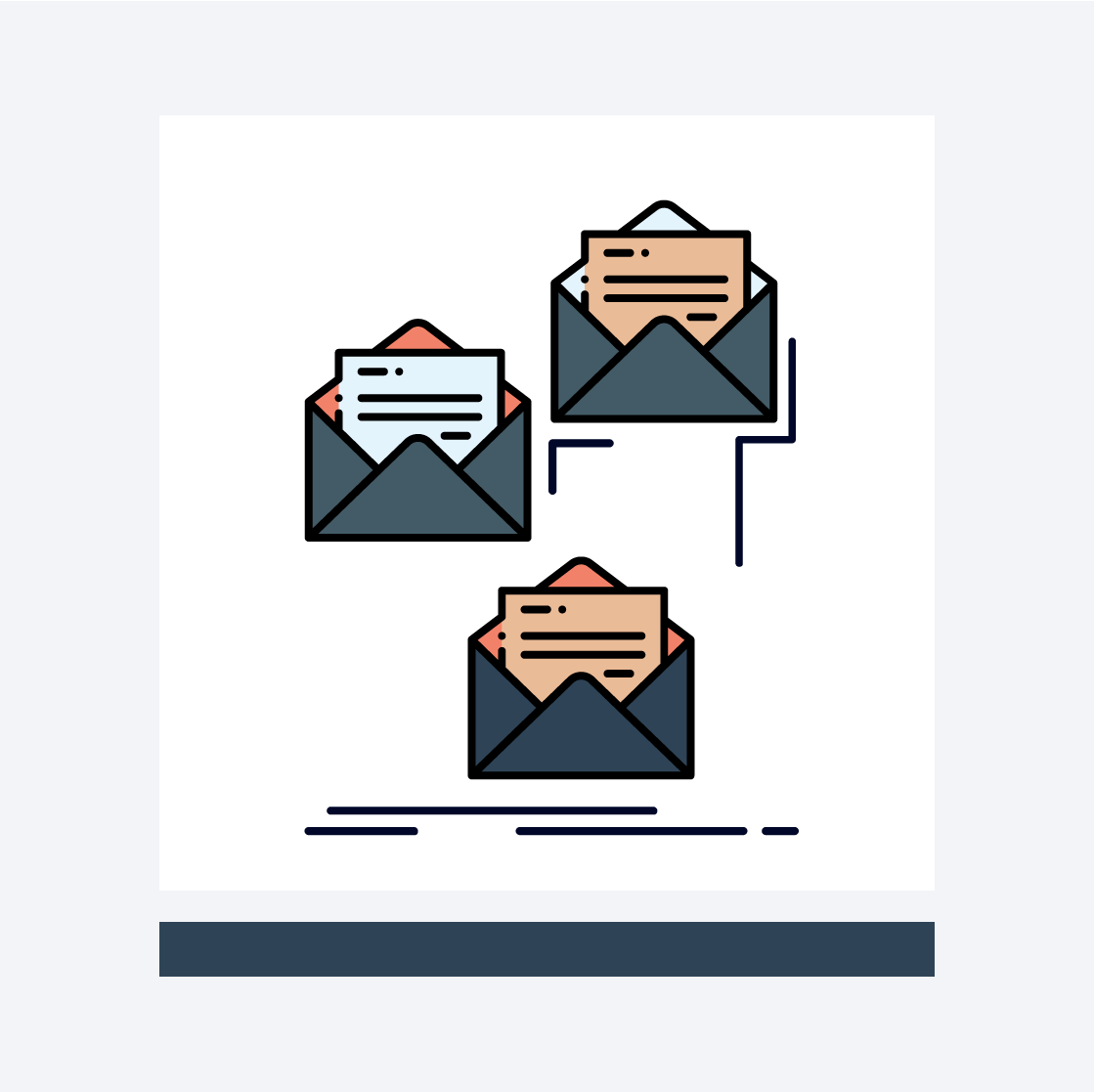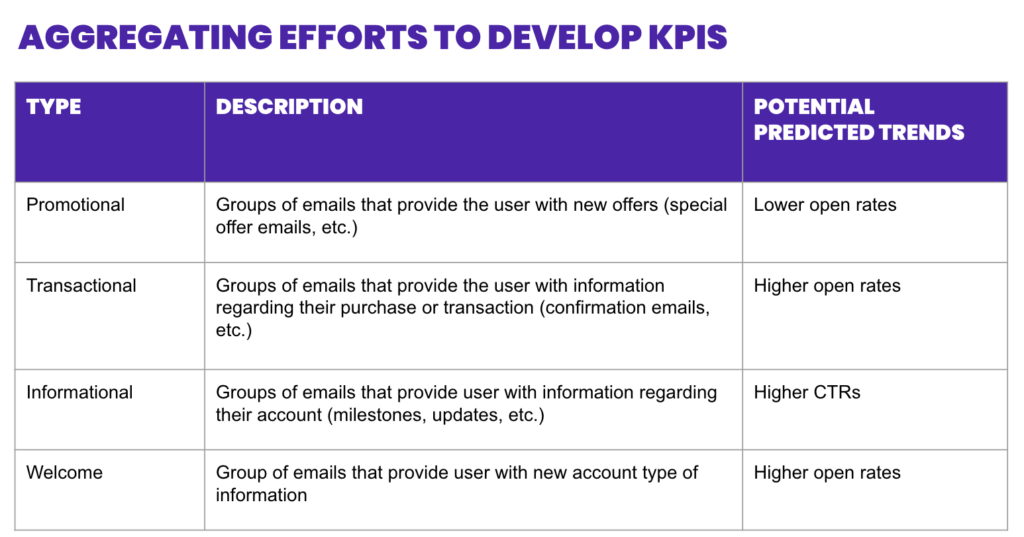Everyone wants to believe their marketing emails are performing well and driving conversions, but what if the data tells a different story? Even the most beautifully designed emails can fail if they don’t address the specific needs and actions of the customer.
This blog will walk through how to use analytics to take the guesswork out of your email designs.
Understand What Makes an Email Successful: Establishing Benchmarks
First, it’s important to understand what makes a good email successful. One way to do this is with benchmarks specific to your business — not industry specific benchmarks. What’s normal for business A, may not be normal for business B.
To establish your own benchmarks, you need to determine what data matters most to your business, and then how you can aggregate that data and aggregate your efforts. For example, compare transactional emails versus promotional emails. Both have different messages behind them and audiences who will receive them. So, when you’re thinking about your KPIs and what those should be, take into consideration the types of messages you’re sending, and the types of groups you’re sending to.
When measuring a “good” email, what specific KPIs should you be looking at? Ultimately only you can really decide, but below are a list of KPIs that can be considered when determining whether your emails are successful or not:
- Click through rate (CTR)
- Click to open rate (CTO)*
- Open rate*
- Element CTR
- Unsubscribe rate
- Campaign/Send + Site metrics
- Conversion rate
*Skewed due to iOS
Data + Creative = Better Emails
Good design matters. Email design isn’t just about what looks good. It actually has a major impact on your KPIs, and has a lot to do with the success of your email. Below are elements of email designs and how they impact KPIs.
Email Length and Scroll Depth to CTA
KPI Impacted: Click Through Rates
Finding your email length sweet spot for a specific audience or a specific type of email is crucial for success. If you create an email that’s too long, you run a risk of losing the interest of your audience. If they have to scroll far, they’re very likely to not see the things that are at the bottom of your email, and they’ll probably have difficulty finding the most important things you want them to do. If your email is too short, you run the risk of not bringing enough value to the recipient and they are likely not to engage. It’s also important to make sure your CTAs are easy to find, intuitive, and thoughtfully placed throughout our email.
Relevant Information For Your Audience
KPI Impacted: Unsubscribes
Unsubscribes are often closely tied to not having a clean list, or not segmenting things properly. But sometimes, not having relevant information for your audience in your email causes unsubscribes. The email content needs to be very thoughtfully created, and needs to match the needs and desires of that specific audience. Getting too broad risks recipients not being able to find the information they need, and the email’s not going to feel personal to them anymore.
Strategic Calls To Action
KPI Impacted: Click Through Rates
When sending out an email, you want to have a desired action that you’d like someone to take from it, or specific information you want them to take away (aka a call to action). It’s important to think about where they are on the page, how many there are, and what message they are conveying. More CTAs does not always equal better — too many can end up distracting from your primary goal. If you are pulling their attention all over the place with a lot of different CTAs, it can be overwhelming and make your email look very cluttered. A single CTA with a high click through rate, is generally going to be more valuable than a lot with a low click through rate.
Personalization at Critical Moments
KPI Impacted: Conversation Rates
If you’re seeing low conversion rates in your transactional emails, having just a little bit of personalization in them can help. Whether it’s the customer’s name, relevant products, products they purchased in the past, or things that they left behind in their cart — making this email come across as something that was sent directly to them is really important. Someone is going to remember the experience of doing business with you, and that goes a long way in getting people to interact with your emails.
To watch this entire session, check out, Send Better Emails from Ultraviolet 2022.

